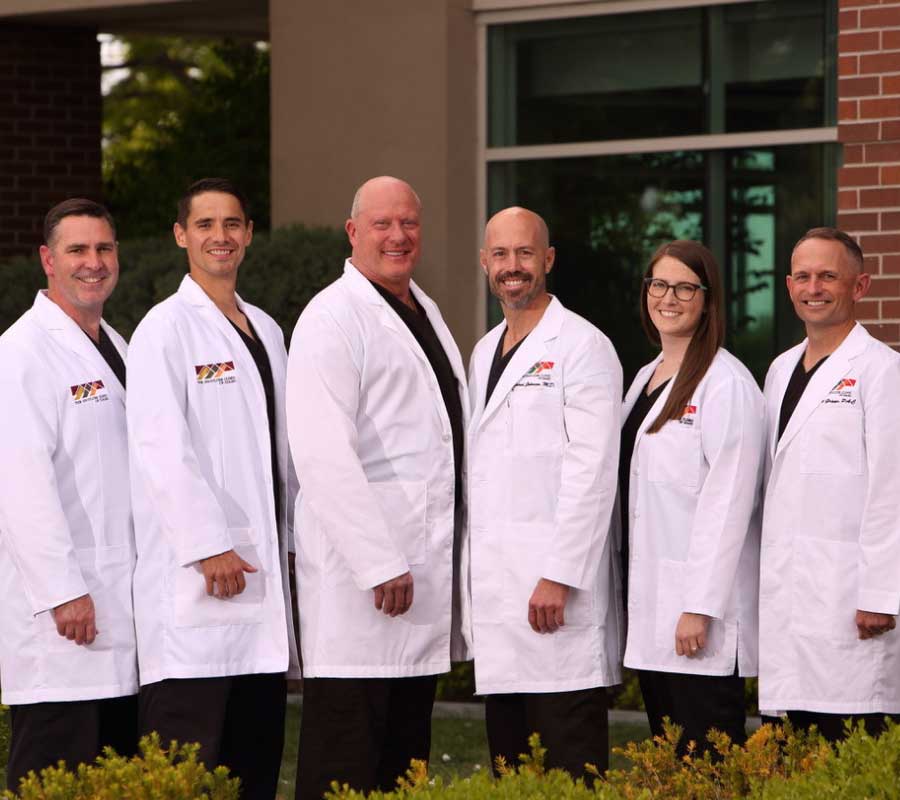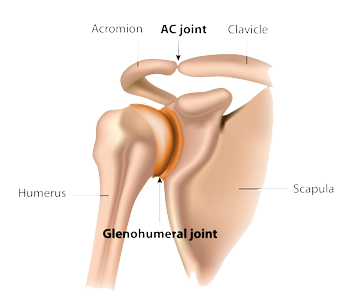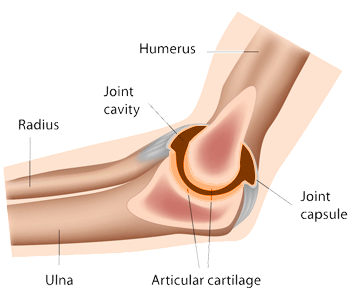Distal Biceps Tendon Tear Specialists

Are you an athlete who participates in sports that involve heavy lifting? If so, you may be at risk of tearing your distal biceps tendon. A distal bicep tear can occur from a blunt force trauma or excessive loading on the joint. The distal biceps tendon tear specialists at the Shoulder Clinic of Idaho provide diagnosis and both surgical and nonsurgical treatment options for patients in Boise who have suffered a distal bicep tear. Contact the Shoulder Clinic of Idaho team today!
Distal Biceps Tendon Tears or Distal Biceps Tendon Rupture
What is a distal biceps tendon tear?
The biceps is the main muscle located on the front of the arm. It assists in bending the elbow and rotating the forearm. The biceps muscle attaches to the ulna – one of the two forearm bones – through a tendon, which acts like a rope at the end of the muscle. Within the upper arm near the shoulder, the biceps separates into two tendons called the short head and long head of the biceps. It is this unique feature of the muscle which is why it is termed the biceps. One of the two biceps tendons travels inside the shoulder joint and attaches to the upper part of the shoulder blade. This tendon is called the long head of the biceps tendon. The second biceps tendon, termed the short head, attaches to a different part of the shoulder blade without traveling through the shoulder joint. These two tendons are proximal in the arm bone and coalesce into one muscle which then combine to form one tendon distally in the arm near the elbow. It is the distal tendon which attaches to the elbow in the forearm allowing for flexion and rotation at the elbow. A distal biceps tenon tear, also known as a distal biceps tendon rupture, occurs when the distal biceps tendon at the elbow is torn from the attachment site on the forearm bone. Distal biceps tendon tears are not as common when compared to other tendon ruptures which may occur the top of the shoulder. Most patients experience a “pop” in the elbow followed by pain and a deformity of the arm. The orthopedic specialists at The Shoulder Clinic of Idaho, serving Boise, Meridian, Nampa, and the surrounding communities of the Treasure Valley have extensive experience in treating distal biceps tendon tears and distal biceps ruptures with excellent success returning patients to their normal work and sports related activities.
Are there different kinds of distal biceps tendon tears?
Elbow injuries can be common among athletes and the active population. A distal biceps tendon tear occurs when the tendon attaching the biceps muscle to the forearm bone in the elbow is torn from the bone. These types of tears are categorized as either partial or complete. A partial tear does not completely separate from the bone as it remains partially intact.
These tendon tears may be amendable to non-surgical treatment. Complete tendon tears of the distal biceps tendon, also known as a distal biceps tendon rupture, results in complete separation of the tendon from the bone allowing for retraction of the tendon into the upper arm, elbow weakness, and muscle deformity.
What causes a distal biceps tendon rupture?
The biceps muscle is responsible for elbow flexion and rotation strength. Most patients with a distal biceps tendon tear or distal biceps tendon rupture will experience pain, weakness and cramping with activities such as twisting a screw driver, turning a key to open a door. Ruptures of the distal biceps tendon are almost always caused by a sudden flexion injury to the elbow caused by attempting to lift a heavy load. This can happen when lifting objects that are too heavy that force the elbow to straighten while the bicep is under tension. This injury is common among middle-aged men during heavy training workouts or in jobs where heavy lifting is involved. If the load is heavier than expected, or shifts unexpectedly during the lift, this forces the elbow to straighten at the same moment the biceps muscle is contracting and working to keep the arm bent. As the biceps muscle contracts harder to help handle the load, the tension on the muscle increases and can reach the tensile limit of the biceps tendon’s attachment. When this occurs the biceps tendon attachment ruptures – or tears – allowing for the biceps tendon and biceps muscle to retract proximally into the arm.
What are the symptoms of a distal biceps tendon tear?
Distal biceps ruptures are uncommon, making up only 3% of all tendon tears. Once a distal biceps tendon has ruptured or torn, symptoms can appear immediately. Symptoms include:
- An audible or palpable “pop” in the elbow, followed by intense pain that decreases overtime to a dull ache or throbbing pain
- Weakness in the arm, especially when twisting or flexing the elbow
- Inability to bend the elbow
- Bruising and swelling in the front of the arm and elbow in the biceps area
- Bulge in the upper arm showing a cosmetic change in the normal contour of the arm
- A gap in the front of the elbow, felt during palpation
- Cramping of the biceps muscle belly
How is a distal biceps tear or distal biceps rupture diagnosed?
The orthopedic specialists at The Shoulder Clinic of Idaho will ask for a complete patient history, as well as the events leading up to the injury. A physical examination will be performed and can often confirm the diagnosis. X-rays as well as an MRI scan may be required to help determine if the tear is complete or partial. These imaging studies will also help guide proper treatment of a distal biceps tendon tear or distal biceps tendon rupture.
How are distal biceps tendon tears treated?
In some cases, non-active patients, and patients without symptoms, may prefer non-surgical treatment for a torn distal biceps tendon. This may also be a consideration for patients with a partial tear. It is important to see an orthopedic specialist who commonly treats distal biceps tears and distal biceps ruptures to help patients with this decision process and to confirm the severity of the diagnosis. Treatment may consist of protecting the arm, resting the joint in a sling and managing the pain with over-the-counter medications for joint inflammation and pain. Non-surgical treatment of a distal biceps tear and distal biceps rupture may result in permanent loss of strength to the elbow, a cosmetic deformity and muscular cramping.
Patients with a distal biceps tear or distal biceps rupture who wish to avoid permanent weakness of the elbow, those bothered by the cosmetic deformity, and those patients who are active individuals commonly decide to have surgery to regain full arm strength. Ideally, surgery should be performed within a few weeks of the injury to prevent scar tissue and further retraction of the muscle. The orthopedic specialists at The Shoulder Clinic of Idaho commonly perform distal biceps repair surgery for patients in the Treasure Valley. They also have experience in more complex distal biceps repair surgery that may be necessary for those patients who did not receive timely surgery or for those patients who have previously undergone a distal biceps repair surgery that either failed or did not heal correctly.
The orthopedic specialists at The Shoulder Clinic of Idaho will consult with the patient to determine the best surgical approach to reattach the distal biceps tendon to the radius (forearm bone). Typically, surgery is performed using small incisions to attach the tendon to the forearm bone. The type and extent of the tear may dictate the surgery required. Specialized instruments are used during this minimally invasive procedure, allowing for less risk of infection, quicker healing time and less pain. Recovery is often quick returning patients to full activity and strength within a few months.
If you have suffered a distal biceps tendon tear, or would like information regarding this type of elbow injury, please contact the orthopedic elbow specialists at The Shoulder Clinic of Idaho serving patients in Boise, Meridian, Nampa and the surrounding communities of the Treasure Valley.



